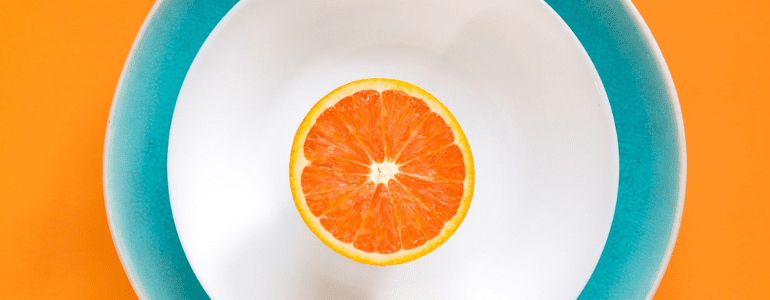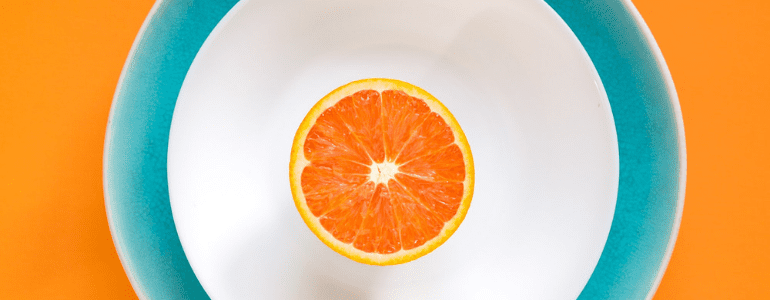

Guest post for Sendinblue by Christine Glossop. Christine works as a writer for Looka—an AI-powered logo maker and graphic design platform—where she focuses on branding-related content.
With almost 300 billion emails sent and received every day, it takes a lot to stand out in the inbox. While that number can seem overwhelming, you can tip the odds in your favor by making one simple change to your email newsletter: bringing your brand identity front and center.
Build your branded newsletter with Sendinblue >>
People prefer the things they’re already familiar with—it’s why 60% of consumers would rather buy something new from a brand they already know. The same concept applies to email engagement. The more your subscribers recognize your brand, the more likely they are to open your emails.
This kind of brand recognition is built by brand consistency. When you keep your talking points, images, fonts, colors, and logo design consistent, customers learn to recognize them. But even though 87% of marketers know brand consistency is key to customer experience, less than 60% say their messaging, visuals, and voice are consistent.
That gap is your brand’s chance to stand out.
Making your brand a familiar face in the inbox means incorporating your brand into every email. To help you start boosting opens and engagement, we’ve put together 14 branding ideas for your newsletter.
1. Send Name
This might seem obvious, but the obvious things can sometimes slip through the cracks when you’re busy worrying about spam scores and unsubscribes.
Make sure your newsletters are coming from your brand, by setting your send name to your brand name. If you want to add a personal touch by using an actual (or fictional) person’s name as your send name, include your brand’s name in the subject line instead.
2. Subject Line
For your newsletter’s subject line, it’s tempting to aim for the open at all costs, cramming as many ALL-CAPS and ?emojis?as you can into one click-baity title. But don’t abandon your brand for the sake of clicks.
Keep your brand voice and messages in mind as you write your subject line, so subscribers have an idea of what to expect when they open your emails. A consistent experience from click to open creates a unified impression of your brand—one your subscribers can connect with.
3. Preview Text
Also known as the ‘second subject line’, preview text is a second chance to make a first impression with your newsletter. Just like your subject line, you’ll want to balance click-worthy intrigue with brand-driven messaging here, to give subscribers a reason to open your emails (and no surprises once they do).
4. Header Logo
Once your subscribers open your newsletter, your brand should be the first thing they see. Adding your wordmark, symbol, or combination logo to the header ensures subscribers know exactly who this newsletter is from, while also helping them recognize your brand’s logo design down the line.
5. Header Color
Color can have a huge impact on your email branding efforts, boosting brand recognition by 80%. While not all newsletter templates let you change the color of your header, you should take this opportunity to customize if you can.
Incorporating one or more of your brand colors into the header—whether in a design or just a solid color block—creates an immediate impression on newsletter subscribers.
6. Color
That impression can be compounded by border and background colors in the body of your newsletters. If you use your primary brand color for your header, you might want to incorporate your secondary or tertiary brand colors into the body of your newsletter, to add a bit of visual variety.
Make sure that any background colors you choose work well with your font color, so your subscribers can actually read the news in your newsletter.
7. Fonts
The brand fonts you’re using on your website should be the same ones you’re using in your email newsletter—which means you’ll need to follow the same rules for H1, H2, H3, and normal text in both. That way, whether subscribers are reading your content in an email or on your site, the experience is the same.
Keep in mind, however, that not all website fonts are recognized by all email service providers. In this case you’ll have to set a default ‘Web safe’ font. Learn more about this in the Sendinblue typography guide.
8. Content
Just like your subject line and preview text, your email copy needs to speak the same language as the rest of your brand. Incorporating those same key messages and voice throughout makes your newsletters an extension of your other marketing efforts—adding to the brand recognition you’ve already built.
Even if you have different writers working on your emails and website content, subscribers should be able to transition seamlessly from a newsletter linking to a page, to the page itself.
9. Rich Media
Rich media like images, videos, and gifs, offer an immediate way for subscribers to recognize your brand, making consistency even more important here.
The images and shapes you use in your newsletters should be the same (or similar) to the ones you use on your website, on social media, in print and anywhere else. If you do this right, newsletter subscribers will be able to recognize your brand at-a-glance across channels.
For both written and visual content, having your brand guidelines available to everyone working on your emails will make it easier to get your newsletters on-brand before you send.
Check out examples of how top brands use rich media in these awesome newsletter samples.
10. Layout
The layout you chose for your website was specifically designed to best present your unique messages and images—both of which should be present in your email newsletters.
Frame your email content consistently with your web content by incorporating a similar framework and style within your newsletter emails.
Even if you have to adjust the layout to work within your email template or constraints, you shouldn’t be sending people from a cluttered newsletter to a minimalist website, or a text-heavy email to an image-focused website.
For all of these newsletter design ideas, the goal is to create an extension of your other marketing efforts. The more consistent your brand is both in your newsletter and across other channels, the easier it is for subscribers to recognize you.
11. Footer Signature
Just like you wanted your logo to be the first thing subscribers saw when opening your email, you also want it to be the last thing they see before clicking away. Consider your header and footer the branded packaging around your newsletter.
To add a little variety, you might consider using the symbol version in the footer if you used your wordmark combination mark in the header (or vice versa). That way, subscribers see more versions of your branding—and have more ways to remember you.
12. Footer Color
While plenty of brands keep the color of their footers neutral, that doesn’t mean you have to.
You can match your footer to your header, use one of your secondary or tertiary brand colors, or add color to items within your footer for a subtle hint of brand presence.
13. Footer Links
One area you can use to showcase your color palette is in your footer links.
Adding social icons in your brand colors does double duty of adding a bit of brand flair, while also offering newsletter subscribers with the option to interact with your brand on other channels.
14. Responsive Design and Unsubscribes
Good user experience might not be part of your brand identity, but it leaves subscribers with a better impression of your brand.
Emails that open well on every device, and let you unsubscribe if you want to, give a better impression of your brand in the long run—to support the rest of your branding efforts, in your newsletter and beyond.
Bringing These Ideas Into Your Newsletter
The goal of email newsletters is to keep subscribers up to date on everything to do with your business—whether that’s new content you’ve written, events you might be hosting, or changes you might be making to your product.
If a subscriber signs up to receive these updates, chances are they already care about your brand.
But you can’t take that brand familiarity for granted.
Your free Sendinblue account gives you access to a range of templates and an easy-to-use drag and drop email builder so that you can leverage these branding ideas for your newsletter.
By building brand recognition in your emails, you can make your newsletter one your subscribers look forward to arriving in their inbox.
 Deutsch
Deutsch





















Comments
Where can i edit the “Preview Text” / “second subject line” in sendinblue.com?
Hi Sebastian. The preview text can be edited in the ‘General’ column on the right-hand side of the Drag & Drop email editor, under the heading ‘Preheader‘. Let me know if you have any other questions.
Amazing ideas to boost people engagement for your business. Thanks for sharing interesting post to improve my business visibility. You can also make strong relationship with a strong Ecommerce SEO checklist in 2019: https://www.techmagnate.com/blog/seo-checklist-ecommerce-website/
Is sendinblue free tool?
Hi Kanica! Sendinblue has a free version that lets you send up to 9000 emails per month (or 300 per day). This also gives access to a range of email and marketing features (templates, HTML editor, marketing automation, etc). For full details on our free plan click here. Hope this helps! Emma 🙂
Nice read!
Glad to be here! Such a nice post. Thanks for sharing.
Your blog is very informative about boost people’s engagement for your business. Thanks for sharing this.
Ready to find your marketing zen?
Take the stress out of your work day with a solution that’s built for you!
Get started free